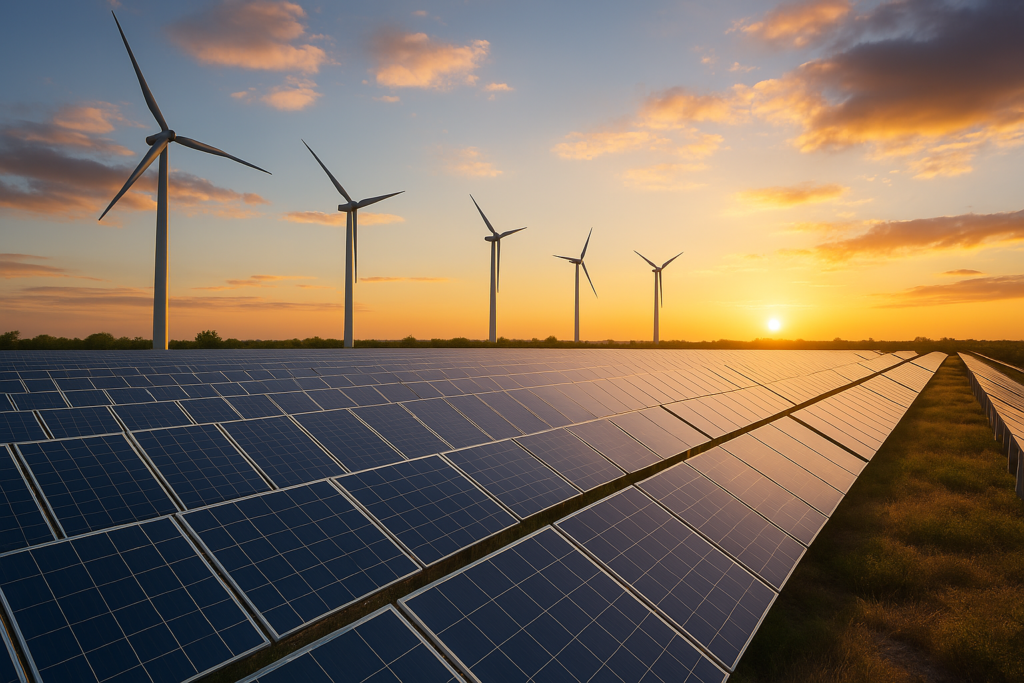India Achieves Historic 25 gigawatts (GW) Renewable Energy Addition in FY 2024-25, Boosting Green Growth Momentum Stated by the Ministry of New and Renewable Energy (MNRE). This represents a 35% year-on-year increase compared to the previous year’s addition of 18.57 GW. The year-on-year increase is 35%, compared with the renewable energy capacity added in the previous year by 18.57 GW.
The capacity addition today stands as a major milestone in India’s aspiration to reach 500 GW of non-fossil fuel capacity by 2030 and heralds the commitment of the country towards sustainable growth and energy independence.
Solar Power Takes the Lead with 21 GW Additions
Among the artistic landscape of India’s renewables, solar power remains in the lead, contributing to almost 21 GW of additionally installed source capacity; this corresponds to an increase of 38% over the previous year, with India crossing the 100 GW mark installed in solar this year alone.
Capacity manufacturing in solar in India is as illustrated:
- Solar module manufacturing jumped from nearly 38 GW in March 2024 to 74 GW in 2025.
- Solar PV cell capacity tripled from 9 GW to 25 GW.
The country launched its first ingot-wafer manufacturing facility with a production capacity of 2 GW for better vertical integration in the solar supply chain.
This is the result of solid policy backing, including the Production Linked Incentive (PLI) Scheme for High-Efficiency Solar PV Modules, which attracted ₹410 billion ($4.79 billion) in investments and created 11,650 direct jobs.
Surya Ghar Muft Bijli Yojana Brings Empowerment to 1.1 Million Households
This programme has also made enormous strides regarding rooftop solar in India under PM Modi’s “Surya Ghar Muft Bijli Yojana”. As of March 31, 2025:
- 1.1 million households have benefitted.
- Disbursed central financial assistance of ₹54.3 billion to 698,000 beneficiaries, which accelerates adoption of rooftop solar in residential areas.
Green Hydrogen Sector Gathers Steam
There was also significant forward movement on India’s Green Hydrogen Mission in:
- ₹22.2 billion in incentives to enable the manufacture of 1500 MW of electrolyser capacity.
- Also, an additional ₹22.3 billion was earmarked for the production of 450,000 tonnes per annum (TPA) of green hydrogen.
The pilot projects under the mission received ₹4.5 billion to explore carbon reduction in the steel sector and ₹2 billion for five pilot initiatives in transportation. These include:
- 37 hydrogen-powered vehicles.
- 9 hydrogen refuelling stations.
Solar Pumping Scheme Breaks Records
Under PM-KUSUM, India broke a new frontier:
- Installations: 440,000 solar pumps for FY 2025 – a 4.2 times increase over the previous year.
- 260,000 pumps were solarised, a 25 times jump compared to FY 2024.
- The financial outlay for this scheme reached ₹26.8 billion, going up by a whopping 268% compared to last year.
IREDA Promotes Financial Growth
The Indian Renewable Energy Development Agency (IREDA) also played a very pivotal role in taking these steps forward:
- Sanctioned a home loan for a 27% increase to INR 474.5 billion.
- Increased disbursements of loans up to 20% at ₹301.6 billion.
Union Minister Prahlad Joshi: “India Is on Track to Become a Global Green Energy Leader”.
He said of this achievement in Union New and Renewable Minister Prahlad Joshi:
“India may perhaps have already become the third largest holder or will soon be one of the biggest holders of renewable energy capacity worldwide. This landmark bears testimony to the vision of the prime minister, Mr Modi, for future sustainable, self-reliant energy.”
Conclusion: A Decisive Decade for India’s Green Energy Future.
Coming into fiscal 2024-25, it emerges as a year of change for India’s journey toward clean energy through strong policy frameworks that strongly lend themselves to robust investment infrastructures and private sector participation. Aligned with Atmanirbhar Bharat goals, India is fast emerging as an all-around global powerhouse in renewable energy manufacturing, deployment, and innovation.

